Returning to our series on the parts of the church building, with St. Germanus, Patriarch of Constantinople as our guide, he continues:
10. The ambo manifests the shape of the stone at the Holy Sepulchre [on which the angel sat after he rolled it away from the doors of the tomb,] proclaiming the resurrection of the Lord to the myrrhbearing women (cf Mt 28:2-7). This is according to the words of the prophet, [“On a bare hill raise a signal” (Is 13:2)] “Climb, O herald of good tidings, lift up your voice with strength” (Is 40:9). For the ambo is a mountain situated in a flat and level place.
The ambo is essentially a large, raised platform whence clergy can address an assembly. In fact, the word ambo derives from the Greek for ascending. And its architecture, the ever-concise St. Germanus tells us, should remind us of two things: the stone at the Holy Sepulchre, and a mountain.
Review a few classic ambones, and you will notice first, that in all of them, the raised platform is round in plan. It is as though the disc-like stone of the Holy Sepulchre has itself been raised up so the priest standing upon it might more perfectly imitate the angel at the Tomb proclaiming the Gospel. Second, there are two sets of steps leading up to the raised platform, one to the east and one to the west. The resulting triangular profile of the ambo reminds us of a mountain.

The Gospel ambo at San Clemente (where else?) on the patronal feast day. “He went up into a mountain–and opening his mouth he taught them” (Matthew 5:1, 2).
[Image source]
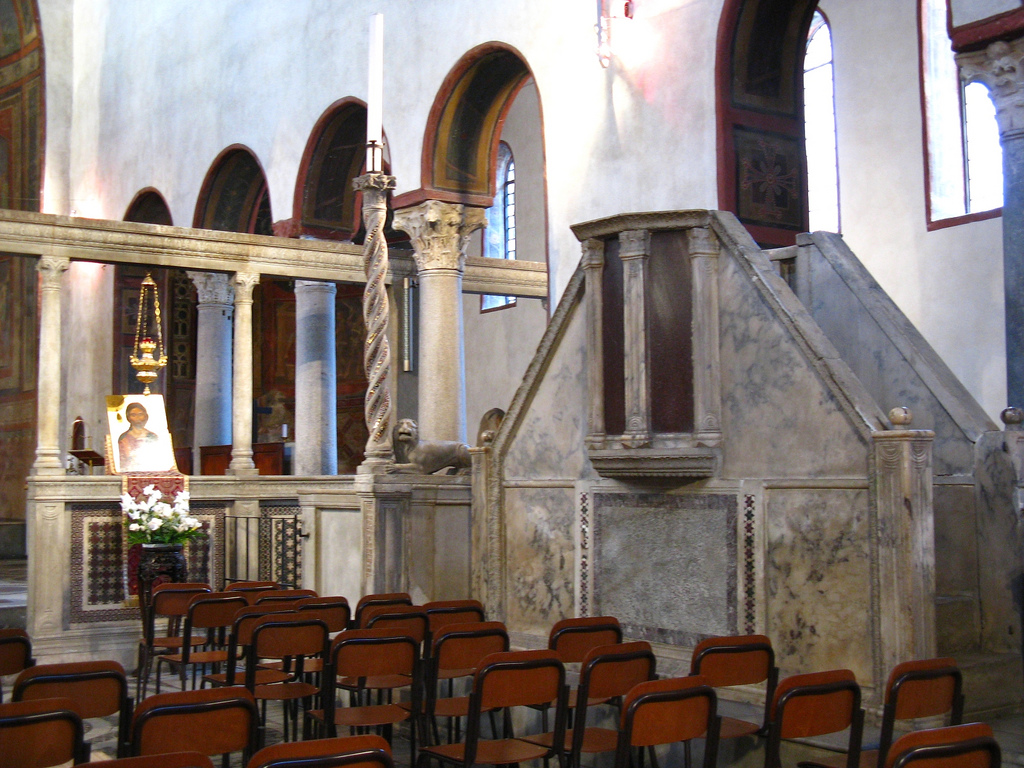
The ambo at Santa Maria in Cosmedin, Rome.
[Image source]
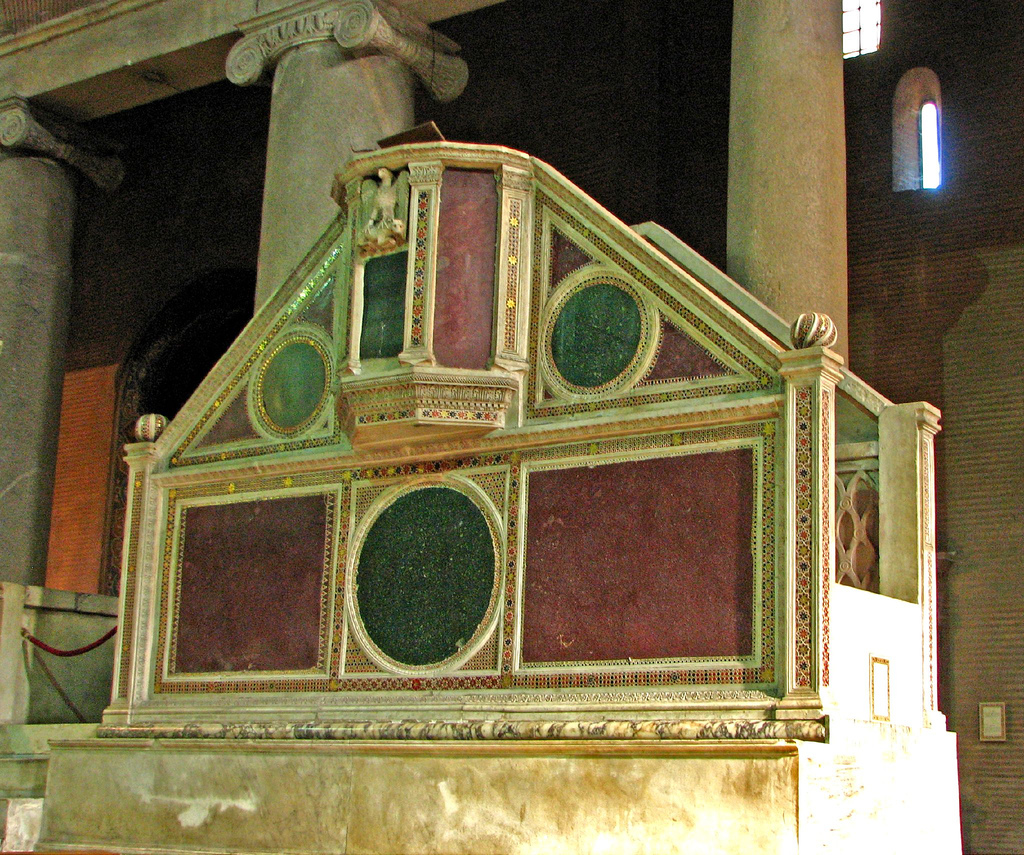
The ambo at St. Lawence Without the Walls, Rome, beautifully detailed with Cosmatesque opus tesselatum.
[Photo by Fr. Lawrence Lew, O.P.]
As lovely as these pieces are, they are but a pale shadow of St. Germanus’s ambo at the Hagia Sophia, perhaps the most beautiful ever constructed. The description of it by Paul the Silentiary is worth a read. Essentially, the ambo, a larger and higher cousin of the examples above, sits in a slightly elevated enclosure defined by a colonnade of eight large columns. The columns, which Paul calls “flowers of stone,” support an ornate entablature, and between them, a wall as high as a man. The platform of the ambo proper is itself raised up on eight columns (unlike the examples above) such that there is a domed space underneath for a chorus. It was all highly ornamented in gold, silver, bronze, ivory, and exotic marbles.
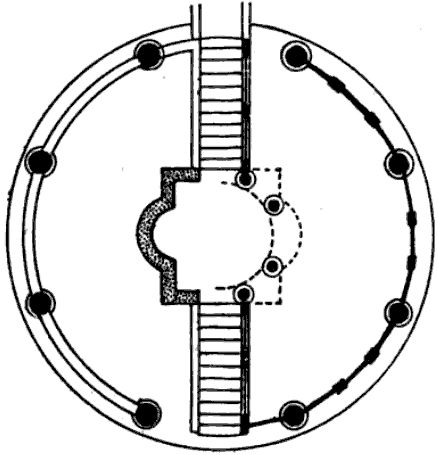
The plan of the ambo at the Hagia Sophia. The upper part of the ambo is described to the left, and the lower part to the right.
Here is how Paul describes its effect on viewers.
And as an island rises amidst the swelling billows, bright with patterns of cornfields, and vineyards, and blossoming meadows, and wooded heights, while sailors, as they steer by it, are gladdened, and the troubles and anxieties of the sea are beguiled; so in the middle space of the boundless temple rises upright the tower-like ambo of stone, with its marble pastures like meadows, cunningly wrought with the beauty of the craftsman’s art.
Not a bad way to demonstrate and inspire a reverence for Sacred Scripture! The ambo has been developed in all sorts of ways over the centuries, so you will find a great deal of variation on the basic motif. Perhaps the most unusual is this triple-decker in St. Mark’s Basilica, Venice.
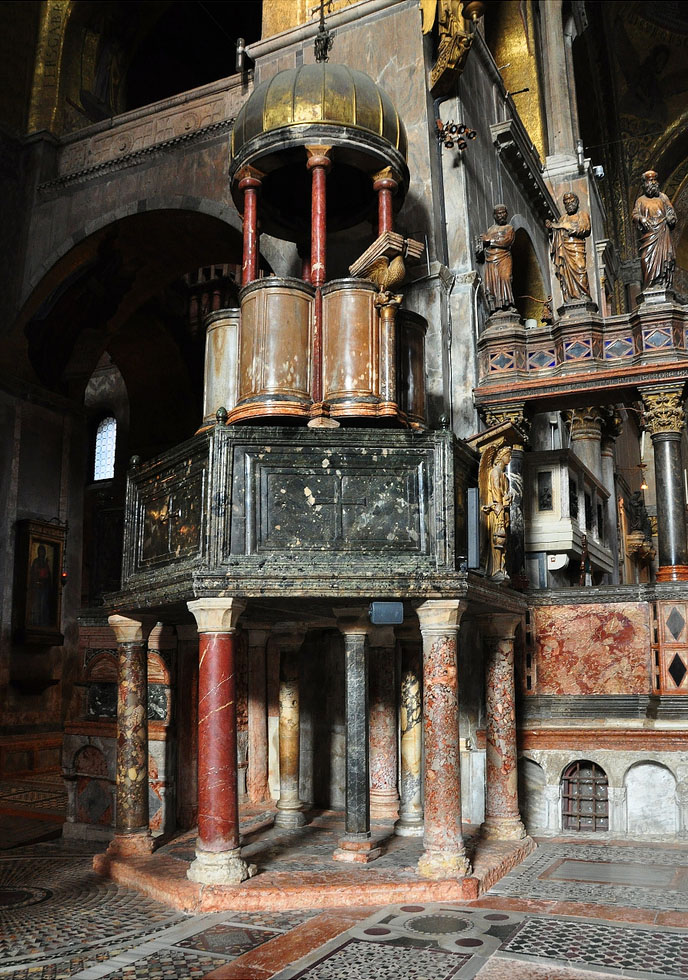
The ambo at St. Mark’s Basilica, Venice. I hope the lower level is not normally used to store folding chairs.
[Image Source]
Many authors use the word ambo interchangeably with the word pulpit; however, the ambo is really something more. A pulpit is an elevated platform with a book-desk, while an ambo can in fact contain more than one pulpit. (Sarnelli humorously takes Durandus to task on this point in his Antica Basilicografia.)
This beautiful piece of liturgical furniture has now all but disappeared in the West. I will leave it to the liturgists to decide whether it will make a comeback. From this architect’s point of view, it would make a most welcome return to the palette.

![The ambo at St. Mark's Basilica, Venice. I hope the lower level is not normally used to store folding chairs.
[Image Source]](https://www.marcantonioarchitects.com/blog/wp-content/uploads/2011/06/ambo-basilica-san-marco-673x960.jpg)
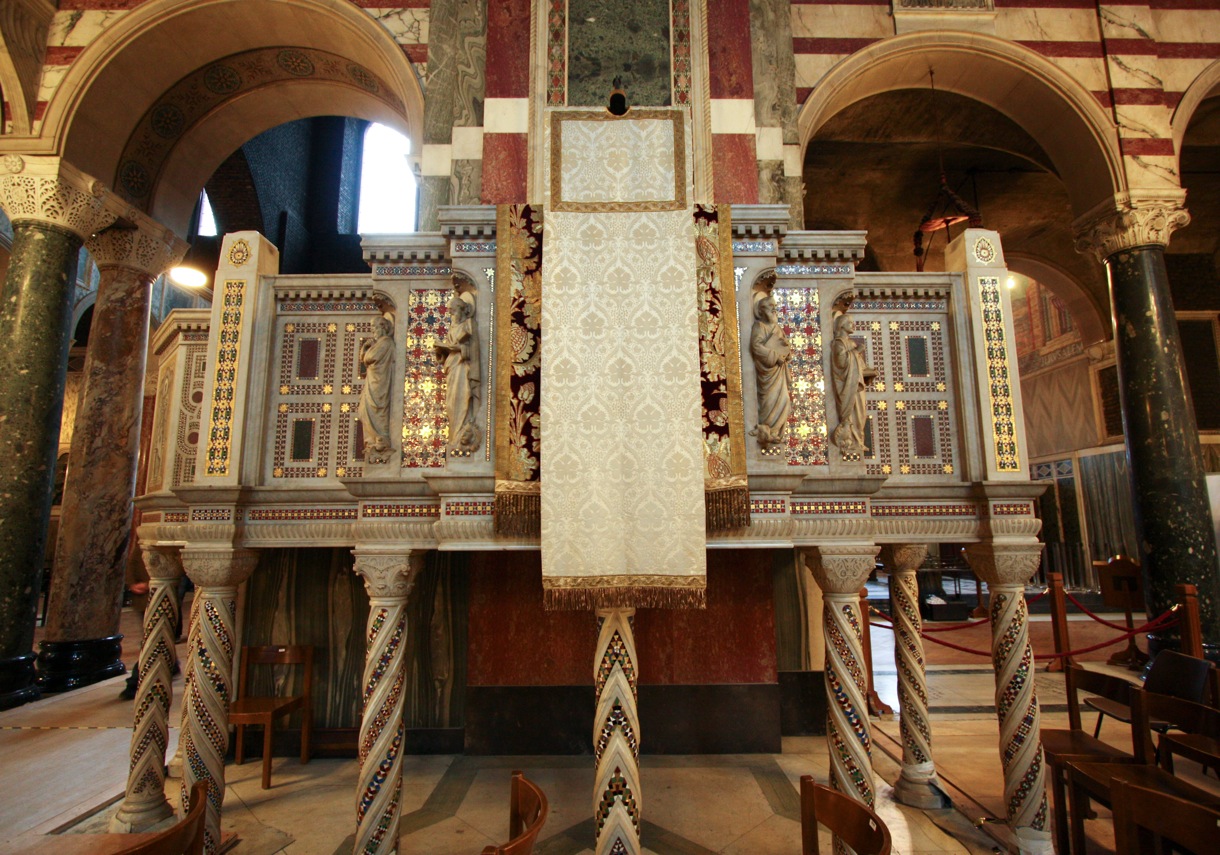
![The Gospel ambo at San Clemente (where else?) on the patronal feast day. "He went up into a mountain--and opening his mouth he taught them" (Matthew 5:1, 2).
[Image source]](https://www.marcantonioarchitects.com/blog/wp-content/uploads/2011/06/san_clemente_ambo.jpg.scaled500-500x288.jpg)
![The ambo at Santa Maria in Cosmedin, Rome.
[Image source]](https://www.marcantonioarchitects.com/blog/wp-content/uploads/2011/06/Ambo_S_Maria_Cosmedin.jpg.scaled500-500x288.jpg)
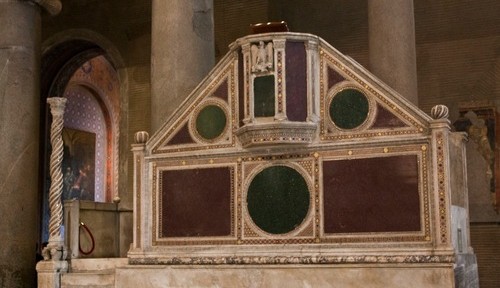
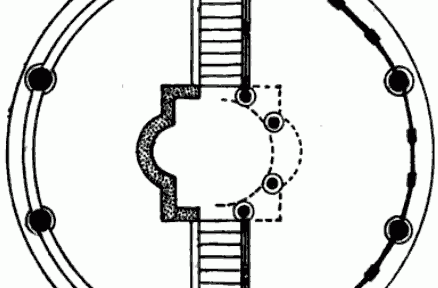
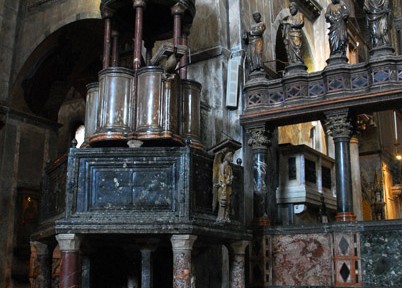
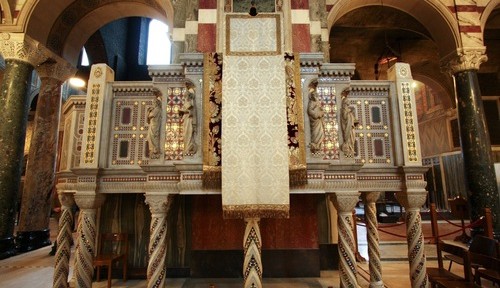
![The Gospel ambo at San Clemente (where else?) on the patronal feast day. “He went up into a mountain–and opening his mouth he taught them” (Matthew 5:1, 2).
[Image source]](https://www.marcantonioarchitects.com/blog/wp-content/uploads/2011/06/ambo-san-clemente-310x420.jpg)
![The ambo at Santa Maria in Cosmedin, Rome.
[Image source]](https://www.marcantonioarchitects.com/blog/wp-content/uploads/2011/06/Ambo-S-Maria-Cosmedin-310x420.jpg)
![The ambo at St. Lawence Without the Walls, Rome, beautifully detailed with Cosmatesque opus tesselatum.
[Photo by Br. Lawrence Lew, O.P.]](https://www.marcantonioarchitects.com/blog/wp-content/uploads/2011/06/Ambo-San-Lorenzo-310x420.jpg)
![The ambo at St. Mark's Basilica, Venice. I hope the lower level is not normally used to store folding chairs.
[Image Source]](https://www.marcantonioarchitects.com/blog/wp-content/uploads/2011/06/ambo-basilica-san-marco-310x420.jpg)
![The Cosmatesque ambo at Westminster Cathedral
[Photo by Br. Lawrence Lew O.P.]](https://www.marcantonioarchitects.com/blog/wp-content/uploads/2011/06/ambo-Westminster--310x420.jpeg)
[…] motivated by enmity towards religion. Their alleged crime consisted of climbing onto the ambo (roughly, the steps leading up to the pulpit) of Russia’s largest cathedral and attempting to […]
If this is indeed a ‘triple decker,’ where is/are the stand| the stands from which the Scripture is read on the very bottom level??? On the upper two, the book racks are visible. Where are the book racks on the lowest level?
I think it’s from there that Old Testament readings are sung by the subdeacon, and he typically holds the missal in his hands, so no need for a book-desk.